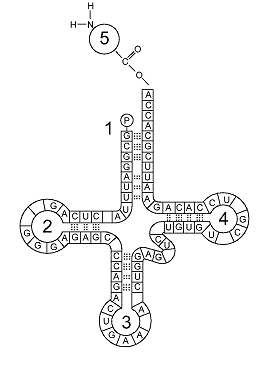This type of RNA is typically found as a strand about 75?90 bases long that folds into a structure with
four double-helical segments.
a. snRNA
b. pre-mRNA
c. rRNA
d. tRNA
e. mRNA
D
You might also like to view...
If a cell was capable of bypassing metaphase and going directly from prometaphase to anaphase, what is the most likely consequence of this?
A. The resulting daughter cells would not have a nuclear envelope. B. The resulting daughter cells would have significantly different quantities of cytoplasmic materials. C. The resulting daughter cells would have different numbers of chromosomes. D. The resulting daughter cells would be completely normal. Clarify Question · What is the key concept addressed by the question? · What type of thinking is required? · What key words does the question contain and what do they mean? Gather Content · What do you know about metaphase? How does it relate to the question? Consider Possibilities · What other information is related to the question? Which information is most useful? Choose Answer · Given what you now know, what information and/or problem solving approach is most likely to produce the correct answer? Reflect on Process · Did your problem-solving process lead you to the correct answer? If not, where did the process break down or lead you astray? How can you revise your approach to produce a more desirable result?
Which group would be considered a community?
a. fish, birds, alligators, water b. a group of alligators c. polar bears, seals, fish d. pandas, bamboo and mountains e. a group of seaweed
Answer the question using the accompanying figure. Bees C and D ____
a. had a different father than bees E and F b. had a different mother than bees E and F c. inherited different alleles than bees E and F from their mother d. inherited different alleles than bees E and F from their father e. are haploid drones while bees E and F are diploid female workers
In the accompanying figure, the portion of the molecule containing the anticodon is indicated by the label:

a. 1.
b. 2.
c. 3.
d. 4.
e. 5.